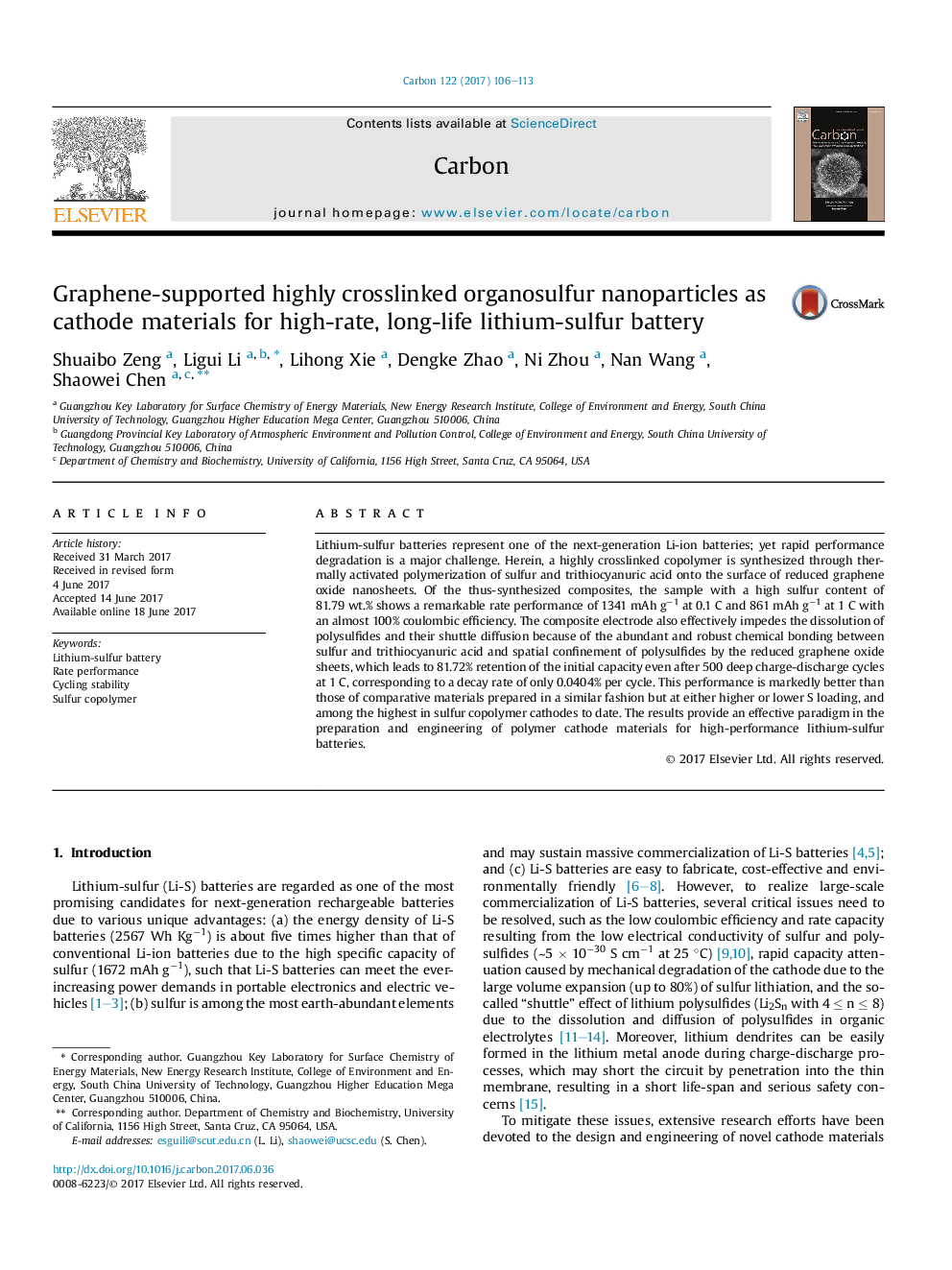| Article ID | Journal | Published Year | Pages | File Type |
|---|---|---|---|---|
| 5431916 | Carbon | 2017 | 8 Pages |
Lithium-sulfur batteries represent one of the next-generation Li-ion batteries; yet rapid performance degradation is a major challenge. Herein, a highly crosslinked copolymer is synthesized through thermally activated polymerization of sulfur and trithiocyanuric acid onto the surface of reduced graphene oxide nanosheets. Of the thus-synthesized composites, the sample with a high sulfur content of 81.79 wt.% shows a remarkable rate performance of 1341 mAh gâ1 at 0.1 C and 861 mAh gâ1 at 1 C with an almost 100% coulombic efficiency. The composite electrode also effectively impedes the dissolution of polysulfides and their shuttle diffusion because of the abundant and robust chemical bonding between sulfur and trithiocyanuric acid and spatial confinement of polysulfides by the reduced graphene oxide sheets, which leads to 81.72% retention of the initial capacity even after 500 deep charge-discharge cycles at 1 C, corresponding to a decay rate of only 0.0404% per cycle. This performance is markedly better than those of comparative materials prepared in a similar fashion but at either higher or lower S loading, and among the highest in sulfur copolymer cathodes to date. The results provide an effective paradigm in the preparation and engineering of polymer cathode materials for high-performance lithium-sulfur batteries.
Graphical abstractDownload high-res image (330KB)Download full-size image
